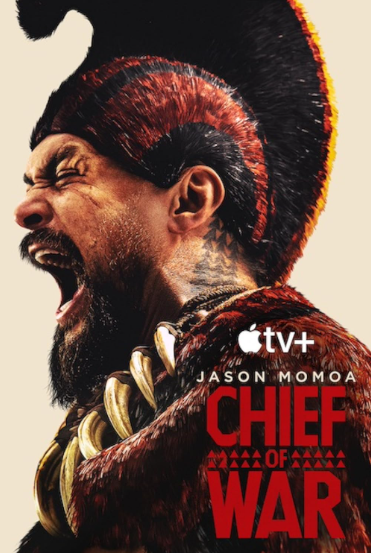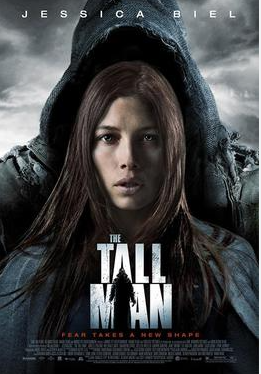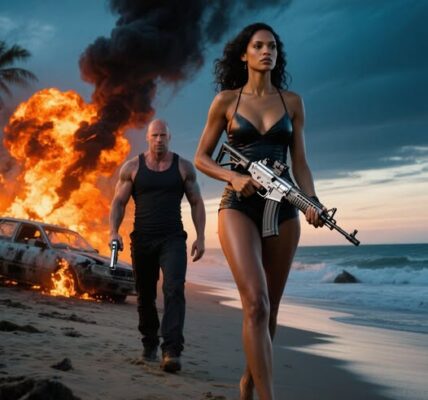1. Plot Summary
The story is set in late 18th-century Hawai‘i during a time when the Islands are divided into four warring kingdoms: Hawaiʻi, Maui, Oʻahu, and Kauaʻi. The central figure is Kaʻiana, a chiefly warrior from Kauaʻi, who has traveled beyond the Islands, returned home, and becomes involved in the campaign to unify Hawaiʻi under Kamehameha I. As tensions mount among the kingdoms, Kaʻiana must navigate betrayal, shifting loyalties, family ties, and the responsibilities of leadership. His decisions lead him to rebel at a crucial moment in the unification war.
2. Notable Elements
- Authentic Cultural Perspective: The series uses Hawaiian language (ʻŌlelo Hawaiʻi) extensively, and heavily involves cultural advisors. It strives for representation from the inside-out.
- Scale & Production Design: The visuals are epic: large-scale battle scenes, traditional weaponry and combat techniques (e.g. LUA), war boats, costumes, environmental sets. Filming took place in both Hawaiʻi and New Zealand.
- Character Complexity: Kaʻiana is depicted as neither a pure hero nor pure villain. His relationship with Kamehameha, his own identity, loyalties, and eventual rebellion add shades of moral conflict, especially against the backdrop of political ambition, tradition, family.
- Historical Conflict and Drama: The internal politics among Hawaiian chiefs, the external pressures, the looming threat of colonial influence, and the moral weight of unifying or resisting these forces provide drama beyond mere battle scenes.
3. Themes & Messages
- Power & Legacy: What does it take to unify separate peoples/kingdoms? How does one’s legacy endure or betray its own people? Kaʻiana’s journey is about power, ambition, and the cost of unity.
- Identity & Loyalty: Kaʻiana’s experience—his travels, exposure to foreign lands, then returning to choose sides—forces him to confront who he serves (his own people vs ambition vs personal values).
- Conflict between Tradition and Change: As warfare, leadership, and technology evolve (guns, foreign influences), the old w ays clash with new demands. The move toward unification under Kamehameha implies sacrifice, compromise, and some betrayal.
- Indigenous Perspectives & Representation: The series is significant in how it centers native Hawaiian characters, language, worldview. It tries to reclaim a history often told through colonial lenses.
4. Personal Impressions
Strengths:
- The ambition is impressive. Taking on an epic historical period with cultural fidelity is no small feat, and Chief of War seems to lean into that with care.
- Jason Momoa’s involvement (both in front and behind the camera) adds emotional weight and authenticity. He appears committed not just to spectacle but to telling this story with respect.
- Visuals and world-building are strong. The battle scenes, costumes, set locations, the tension of political intrigue are compelling.
Weaknesses / Potential Issues:
- With such large scope, there’s risk that some characters or subplots may feel under-developed; balancing epic scale with individual emotional arcs is hard.
- Historical dramas sometimes take liberties; viewers wanting strict accuracy may find elements added for dramatic effect.
- The pacing could lag in parts: the political maneuvering, speeches, and buildup may feel slow if one is more interested in action.
5. Audience Recommendations
You’ll especially enjoy Chief of War if you:
- Appreciate historical epics with moral complexity and cultural authenticity.
- Are interested in indigenous history, especially Hawaiian history, or untold stories.
- Like drama mixed with action: battles, politics, familial conflict, loyalty, betrayal.
Might be less appealing if you:
- Prefer tight, fast-paced narratives without much political exposition.
- Dislike when stories dramatize or rework history for narrative effect.
- Are looking for pure escapism or action without the emotional or historical weight.
6. Conclusion & Rating
Overall, Chief of War is an impressive and meaningful addition to the historical drama genre. It stands out for its indigenous perspective, its visual scale, and the complexity of its characters. While it may not be perfect, it aims high and largely delivers.
Final Recommendation: Highly recommended for viewers who like their history epic, their characters conflicted, and their storytelling both grand and grounded.
Five-Star Rating: ⭐⭐⭐⭐ ½ out of 5
Watch more:


